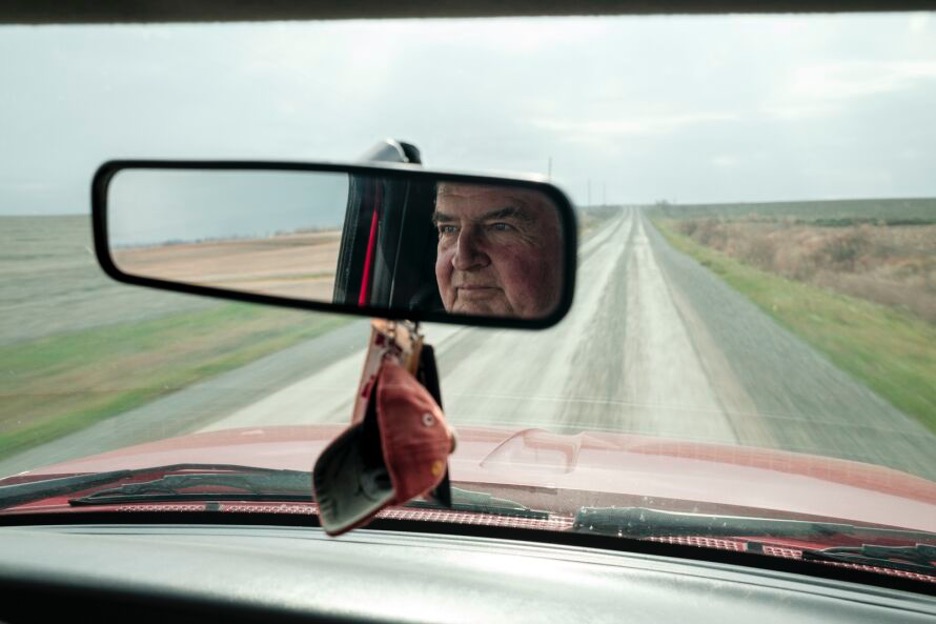Farm to Trouble, Part 1 of 5 — “As conservation lags, so does progress in slashing Gulf’s ‘dead zone’”
This story is the first in a five-part series being shared by MSSC with permission called “Farm to Trouble,” a collaborative investigative reporting effort led by AG & Water Desk. The series takes a deep dive into the slow progress to reduce the polluted runoff from agriculture and other industries into the Mississippi River. This runoff from 31 states flows into the Gulf of Mexico and has created a “dead zone” off of Louisiana’s western coast and threatens to make the Mississippi Sound a dead zone in the future.
By Erin Jordan, Cedar Rapids Gazette, June 18, 2024

CEDAR RAPIDS, Iowa – The cover crop that blankets Dan Voss’ farmland from late fall into the spring comforts the Eastern Iowa farmer because he knows heavy spring rain won’t wash away his topsoil. These off-season crops also soak up excess fertilizer.
But for every Dan Voss, there are a thousand U.S. farmers not growing cover crops or using other conservation practices shown to reduce runoff. Other agricultural practices – more tile drainage, more livestock and more fertilizer – are thwarting plans to slash nitrogen and phosphorus washing down the Mississippi River to the Gulf of Mexico, where excess nutrients threaten wildlife and fishing industries.
“The agricultural community, we need to get with it,” Voss said. Just one year away from a 2025 deadline to reduce nitrate and phosphorus entering the Gulf by 20%, success seems unlikely. The Gulf of Mexico Hypoxia Task Force, a collaboration of state, federal and tribal agencies charged with controlling fertilizer pollution, told Congress last fall that nitrogen loads in the Mississippi River basin decreased 23% from the baseline period to 2021.
But the five-year running average – which accounts for extremely wet and dry years more common with climate change – tells a different story. By that measure, nitrogen is only slightly below baseline and well above the 20% target. Phosphorus loads worsened since the baseline period.
The oxygen-deprived ‘dead zone’ in the Gulf is predicted to be 5,827 square miles this summer, 5% larger than average, according to a forecast last week by the National Oceanic and Atmospheric Administration. Two long-time Gulf researchers predict a smaller ‘dead zone’, but only because of warming ocean temperatures, not because of progress reducing nutrients in the Mississippi River basin.
The U.S. Environmental Protection Agency was created in the 1970s to protect water, air and land from pollution. But when it comes to fertilizer choking the Gulf, the EPA – which chairs the task force – sees its role as more of a financier than enforcer.
“This is one of these areas where we have some regulatory authority, which I believe we are leveraging to the maximum ability that we have,” EPA Administrator Michael Regan told the Mississippi River Basin Ag & Water Desk, the journalism collaborative that reported this story, in April regarding the EPA’s role in the task force goals.
“This is an area where we have to have partnerships, not only with the USDA, but with the agricultural community, to really design more creative and rewarding voluntary programs, as we think about how we look at agriculture, farming and other practices in this country,” Regan said.
“Farm to Trouble” Credits:
Contributing reporters & news outlets: Erin Jordan, The Gazette (Iowa); Delaney Dryfoos, The Lens (New Orleans); Madeline Heim, Milwaukee Journal Sentinel; Bennet Goldstein, Wisconsin Watch; Eric Schmid, St. Louis Public Radio; Joy Mazur, Columbia Missourian (Missouri); and Connor Giffin, Louisville Courier Journal (Kentucky).
Lead editors: Tegan Wendland, Ag & Water Desk; Erin Jordan, The Gazette; Kelly McEvers, host of NPR’s Embedded podcast
Data visualizations: Jared Whalen, data journalist, Ag & Water Desk
The Ag & Water Desk receives major funding from the Walton Family Foundation, which also funds many organizations within our region. The Desk retains full editorial independence. Please contact info@agwaterdesk.org with any questions.
Organizations referenced in this series that have also received Walton funding: Ducks Unlimited, Tulane University, Gulf Restoration Network, The Nature Conservancy, Louisiana Department of Agriculture and Forestry, University of Iowa, University of Minnesota, Minnesota Center for Environmental Advocacy, Iowa Environmental Council, Practical Farmers of Iowa, Precision Conservation Management, and Lighthawk.